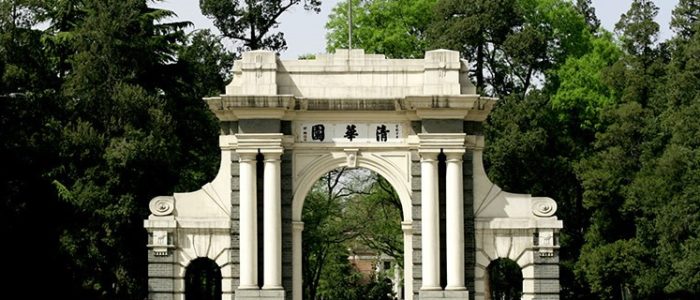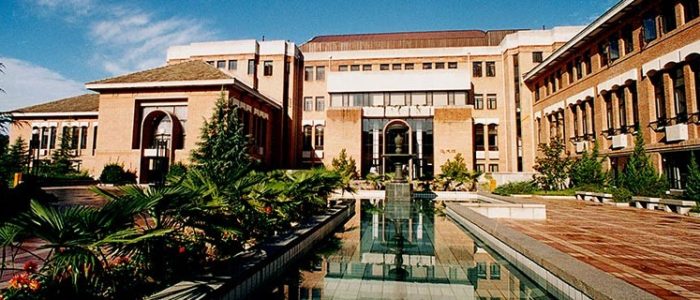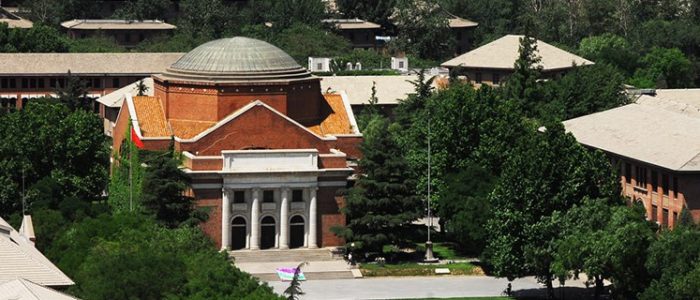Tsinghua University,is a research university located in Beijing and a member of the C9 League of Chinese universities. With its motto of Self-Discipline and Social Commitment, Tsinghua University is dedicated to academic excellence, the well-being of Chinese society, and global development. Tsinghua is ranked as one of the top academic institutions in China and Asia, placing 14th worldwide in the 2017 Times Higher Education World Reputation Rankings.
Tsinghua University has been ranked as the best engineering school in the world, ranking 1st among 250 universities in the Best Global Universities for Engineering list, which consists of top universities from around the world that have shown strength in producing research and achievements on a variety of engineering topics, overtaking MIT. The university has also shown strong performances in other topics, achieving top 10 ranking worldwide in several subjects. It is one of the most cited institutions in the world, and has collaborated and partnered with many world leading universities, research institutes, and multinational enterprises.
Tsinghua University was established in 1911, originally under the name “Tsinghua Xuetang”. The school was renamed “Tsinghua School” in 1912. The university section was founded in 1925. The name “National Tsinghua University” was adopted in 1928.The faculty greatly valued the interaction between Chinese and Western cultures, the sciences and humanities, the ancient and modern. Tsinghua scholars Wang Guowei, Liang Qichao, Chen Yinque and Zhao Yuanren, renowned as the “Four Tutors” in the Institute of Chinese Classics, advocated this belief and had a profound impact on Tsinghua’s later development.
Tsinghua University was forced to move to Kunming and join with Peking University and Nankai University to form the Southwest Associated University due to the Resistance War against the Japanese Invasion in 1937. In 1946 The University was moved back to its original location in Beijing after the war. After the founding of the People’s Republic of China, the University was molded into a polytechnic institute focusing on engineering in the nationwide restructuring of universities and colleges undertaken in 1952. In November 1952, Mr. Jiang Nanxiang became the President of the University. He made significant contributions in leading Tsinghua to become the national center for training engineers and scientists with both professional proficiency and personal integrity.
Since China opened up to the world in 1978, Tsinghua University has developed at a breathtaking pace into a comprehensive research university. At present, the university has 14 schools and 56 departments with faculties in science, engineering, humanities, law, medicine, history, philosophy, economics, management, education and art. The University has now over 25,900 students, including 13,100 undergraduates and 12,800 graduate students. As one of China’s most renowned universities, Tsinghua has become an important institution for fostering talent and scientific research. The educational philosophy of Tsinghua is to “train students with integrity.” Among over 120,000 students who have graduated from Tsinghua since its founding are many outstanding scholars, eminent entrepreneurs and great statesmen remembered and respected by their fellow Chinese citizens.
With the motto of “Self-Discipline and Social Commitment” and the spirit of “Actions Speak Louder than Words”, Tsinghua University is dedicated to the well-being of Chinese society and to world development.
Tsinghua alumni include the current General Secretary of the Chinese Communist Party and Paramount Leader Xi Jinping, who graduated with a degree in chemical engineering in 1979, as well as the CPC General Secretary and former Paramount Leader Hu Jintao, who graduated with a degree in hydraulic engineering in 1964. Tsinghua has a reputation for hosting some of the most distinguished guest speakers of any university in the world, with international leaders such as Bill Clinton, Tony Blair, Henry Kissinger, Carlos Ghosn, Park Geun-hye, and Henry Paulson, all recently giving lectures to the university community.
As of 2003, Tsinghua University has 12 colleges and 48 departments, 41 research institutes, 35 research centers, and 167 laboratories, including 15 national key laboratories. In September 2006, Peking Union Medical College was renamed to Peking Union Medical College, Tsinghua University, although the Peking Union Medical College and Tsinghua University remain two separate institutions. The university offers 51 bachelor’s degree programs, 139 master’s degree programs and 107 PhD programs. Recently, Tsinghua has become the first Chinese university to offer a Master of Laws program in American law, through a cooperative venture with the Temple University Beasley School of Law. The university is a member of LAOTSE, an international network of leading universities in Europe and Asia. Each year, the University celebrates the Intellectual Property Summer Institute in cooperation with Franklin Pierce Law Center of Concord, New Hampshire. It has its own editorial, Tsinghua University Press.
Announced in 2013, the Schwarzman Scholars program will consist of 200 scholars to be chosen annually to work towards a one-year master’s degree in Public Policy, International Relations, Engineering, Economics & Business. These scholars will live on the university campus at Schwarzman College, a residential college being built specifically for this program. In 2016, Tsinghua’s expenditures were RMB 13.7 billion (US$3.57B at purchasing power parity), the largest budget of any in China.



